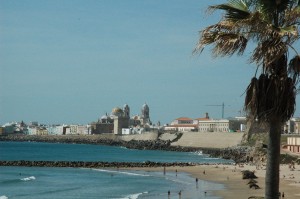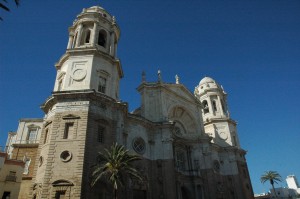Cadiz, Spain: April 13, 2011
Cranes tower above the skyline of Cadiz situated on Spain’s southern Atlantic coast. Preparations are underway giving a facelift to classical architecture for an international diplomatic gathering taking place next year.
Within the compact city, temporary construction stirs as workers ready the streets and plazas for holy week. Coming late this year, in the last weeks of April, Easter will fill this town and other destinations like it with pilgrims and devout locals.
The narrow, winding cobblestone streets are a picture of medieval Spain well preserved by imposing city walls, still intact at several key points. The remnants of these defensive barriers are found of varying ages hidden within one another ranging from the 13th to 18th centuries. Like Russian nesting dolls, the city continued to build outside of its walls increasing in area while effectively keeping its historical district alive.
This port city rose to prominence as one of Europe’s wealthiest serving as a terminus for explorers returning from the New World. Christopher Columbus set sail from Cadiz for his second transatlantic expedition in 1493. Successful explorers brought with them gold and other valuable treasures creating wealth along with a trade empire.
New World gold can still be seen adorning the altars of Cathedrals throughout the city. The ‘New Cathedral,’ as it’s known, remains one of the largest in Christendom standing above the city with its glistening gold dome. The sanctuary took 116 years to be completed and consumed the careers of several architects embodying the architectural styles of three separate generations.
With the advancement of the ages, Cadiz has continued to remain in prominence. Spain’s first constitution was signed in Cadiz in 1812 allowing citizens many of the same freedoms enjoyed today. The harbor continues to play a key role in the local economy spurring trade, tourism and a strong fishing industry.
Today, Cadiz sprawls outside of its walls contained only by the peninsula it perches upon. Modern Cadiz boasts white sandy beaches and warm temperatures for much of the year. A well blended mixture of new and old, Cadiz remains an enchanting city often overshadowed by nearby Seville. Cadiz may be best known by tourists for an extravagant and vibrant Carnaval, but this small coastal city with a population of less than 200,000 is a sight to be seen year round.






